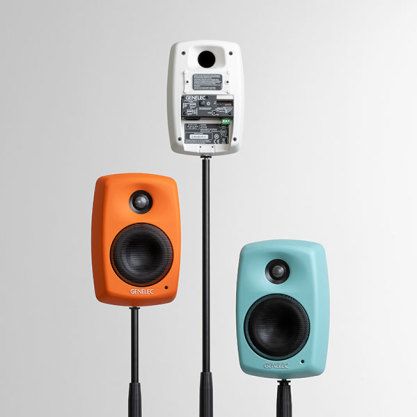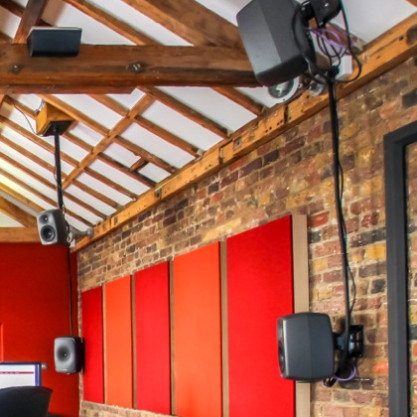The following has evaluated to null or missing:
==> cmsEntity.getLocalizedField(profile, "/entity/fields/title") [in template "20116#20152#259373" at line 10, column 25]
----
Tip: If the failing expression is known to be legally refer to something that's sometimes null or missing, either specify a default value like myOptionalVar!myDefault, or use <#if myOptionalVar??>when-present<#else>when-missing</#if>. (These only cover the last step of the expression; to cover the whole expression, use parenthesis: (myOptionalVar.foo)!myDefault, (myOptionalVar.foo)??
----
----
FTL stack trace ("~" means nesting-related):
- Failed at: #assign productTitle = cmsEntity.getL... [in template "20116#20152#259373" at line 10, column 1]
----
1<#include "${templatesPath}/227222">
2
3<#if cmsEntity?has_content>
4
5<#assign mainImage = "" >
6<#if cmsEntity.getLocalizedField(profile, "/entity/assets/mainImage")?has_content>
7 <#assign mainImage = cmsEntity.getLocalizedField(profile, "/entity/assets/mainImage") >
8</#if>
9
10<#assign productTitle = cmsEntity.getLocalizedField(profile, "/entity/fields/title")>
11<#assign products = [] >
12<#if cmsEntity.getField(profile, "/entity/relationships/bundles")?has_content>
13 <#assign bundles = cmsEntity.getField(profile, "/entity/relationships/bundles") >
14 <#assign products = cmsBundleService.getProductsInBundle(profile, bundles.get(0).id)>
15</#if>
16
17<#assign mobileImg = "">
18<#if cmsEntity.getLocalizedField(profile, "/entity/assets/mobileMainImage")?has_content>
19 <#assign mobileMainImage = cmsEntity.getLocalizedField(profile, "/entity/assets/mobileMainImage") >
20 <#if mobileMainImage.url?has_content>
21 <#assign mobileImg = mobileMainImage.url>
22 </#if>
23</#if>
24
25<#assign portalUrl = themeDisplay.getPortalURL() >
26<#assign currentURL = portalUrl + themeDisplay.getURLCurrent() >
27<@appendHTMLMetas currentURL cmsEntity />
28
29<div class="main-image-container">
30
31<div class="parallax-window" data-parallax="scroll"></div>
32
33<#if cmsEntity.getField(profile, "/entity/fields/summary")?has_content >
34 <#assign summary = cmsContentFormatterService.getMarkdown(cmsEntity.getLocalizedField(profile, "/entity/fields/summary"))>
35</#if>
36
37
38 <@sectionHeader title="${title}" menuTitle="${menuTitle}" cssClasses="background" id="solutions-main-image"/>
39 <div class="gradient-layer-black-left"></div>
40
41 <div class="bg-content">
42 <div class="first-section">
43 <h1 class="product-page-heading text-light">${productTitle}</h1>
44 <div class="row justify-content-between">
45 <div class="col-12 col-md-7 article-content">
46 <#if summary?has_content>
47 <div class="product-page-intro text-light">${summary}</div>
48 </#if>
49
50
51 <#if cmsEntity.getField(profile, "/entity/relationships/bundleSpecifications/properties/shortTermMaxSpl")?has_content >
52 <#assign spl = cmsEntity.getField(profile, "/entity/relationships/bundleSpecifications/properties/shortTermMaxSpl") >
53 <div class="row text-white mb-4">
54 <div class="col-12 col-xl-6">
55 <div class="media product-page-media">
56 <@imageThumbnail src="${getProductSpecificationIconUrl('SPL_white')}" id="" cssClasses="mr-3" thumbnail="techSpecIcon"/>
57 <div class="media-body"> <p class="mt-0 text-bolder"><@liferay.language key="spl"/></p> <p class="small">${spl} dB</p></div>
58 </div>
59 </div>
60 </#if>
61
62 <#assign
63 frequencyResponseAccuracy = ""
64 frequencyResponseLowCutoff = ""
65 frequencyResponseHighCutoff = ""
66 >
67
68 <#if cmsEntity.getField(profile, "/entity/relationships/bundleSpecifications/properties/frequencyResponseAccuracy")?has_content >
69 <#assign frequencyResponseAccuracy = cmsEntity.getField(profile, "/entity/relationships/bundleSpecifications/properties/frequencyResponseAccuracy")>
70 </#if>
71 <#if cmsEntity.getField(profile, "/entity/relationships/bundleSpecifications/properties/frequencyResponseLowCutoff")?has_content >
72 <#assign frequencyResponseLowCutoff = cmsEntity.getField(profile, "/entity/relationships/bundleSpecifications/properties/frequencyResponseLowCutoff")>
73 </#if>
74 <#if cmsEntity.getField(profile, "/entity/relationships/bundleSpecifications/properties/frequencyResponseHighCutoff")?has_content >
75 <#assign frequencyResponseHighCutoff = cmsEntity.getField(profile, "/entity/relationships/bundleSpecifications/properties/frequencyResponseHighCutoff")>
76 </#if>
77
78 <#if frequencyResponseAccuracy?has_content && frequencyResponseLowCutoff?has_content && frequencyResponseHighCutoff?has_content>
79 <div class="col-12 col-xl-6">
80 <div class="media product-page-media">
81 <@imageThumbnail src="${getProductSpecificationIconUrl('AccuracyOfFrequencyResponse_white')}" id="" cssClasses="mr-3" thumbnail="techSpecIcon"/>
82 <div class="media-body">
83 <p class="mt-0 text-bolder"><@liferay.language key="accuracy-of-frequency-response"/></p>
84 <p class="small">
85 ${frequencyResponseLowCutoff} Hz -
86 ${frequencyResponseHighCutoff/1000} kHz
87 ±${frequencyResponseAccuracy} dB </p>
88 </div>
89 </div>
90 </div>
91 </div>
92 </#if>
93
94 <hr class="bg-white">
95
96 <#if products?has_content>
97 <p class="mt-4 text-bolder text-light"><@liferay.language key="products-in-this-solution"/></p>
98 <#list products as product>
99 <#assign i = product?index>
100 <#assign quantity = bundles.get(0).relationships.productEntries.get(i).properties.quantity>
101 <#assign image = product.getLocalizedField(profile, "/entity/assets/listingImage")>
102 <#assign alt = "">
103
104 <#assign listingImageRel = product.getLocalizedField(profile, "/entity/relationships/listingImage/locales")!"" >
105
106 <#if listingImageRel?has_content && !listingImageRel.properties.isNull("altText")>
107 <#assign alt = localizeField(listingImageRel.properties.altText, profile.getCMSLangCode())>
108 </#if>
109
110 <#assign name = product.getLocalizedField(profile, "/entity/fields/title")>
111
112 <div class="solution-products">
113
114 <div class="media">
115 <div class="media-img mr-2">
116 <img alt="${alt}" src="${image.url}?w=70&fm=png&fl=png8">
117 </div>
118 <div class="media-body align-self-center">
119 <span class="h2 text-bold text-light">
120 ${quantity}
121 </span>
122 <span class="text-light"> × </span>
123 <span class="text-bold text-light">${name}</span>
124 </div>
125 </div>
126 </div>
127 </#list>
128 </#if>
129 </div>
130 </div>
131 </div>
132 </div>
133
134 <@sectionFooter/>
135
136 <@printSubmenu />
137
138 <#if mainImage?has_content && mainImage.url?has_content>
139 <@parallaxBackground url="${mainImage.url}?w=1250&fm=jpg&q=85" speed="0.4" mobileUrl="${mobileImg}"/>
140 </#if>
141
142</div>
143
144 <style>
145 .solution-products >span{
146 vertical-align: middle;
147 }
148
149 .background {
150 background: none;
151 }
152
153 .bg-content {
154 position: relative;
155 min-height: 90vh;
156 }
157
158.background {
159 position: relative;
160}
161
162@media (min-width: 992px) {
163 .background {
164 min-height: calc(100vh - 80px);
165 }
166}
167
168 /*
169 .has-control-menu .background {
170 height: calc(100vh - 56px - 50px + 500px);
171 }
172 */
173
174 .solution-products .media-img {
175 text-align: center;
176 }
177
178 .solution-products .media-body span {
179 vertical-align: middle;
180 }
181
182 /* yliajaa olemassaolevan */
183 #mainImage .container-padding hr {
184 margin: 1rem auto;
185 border: 1px solid black;
186 }
187
188 .text-link {
189 cursor: pointer;
190 }
191
192 @media (min-width: 992px){
193 .first-section .row {
194 width: 100% !important;
195 }
196 }
197
198 @media (min-width: 992px) {
199 .first-section > .row, .first-section .product-page-heading {
200 width: 50%;
201 }
202 }
203
204 </style>
205
206</#if>

8331A

SPL
104 dB

Respuesta en frecuencia
45 Hz - 37 kHz (-6dB)

Dimensiones
H 305 x W 189 x D 212 mm, with Iso-Pod™ (ver en pulgadas)

7360A

SPL
109 dB

Respuesta en frecuencia
19 Hz - 150 Hz (-6dB)

Dimensiones
H 527 x W 462 x D 363 mm, (ver en pulgadas)

Smart Active Monitoring (SAM™) and GLM™ calibration technology

Minimum Diffraction Coaxial (MDC™) Driver Technology

Acoustically Concealed Woofers (ACW™) Technology

Directivity Control Waveguide (DCW™) Technology

Minimum Diffraction Enclosure (MDE™) Technology

Reflex Port Design

Protection Circuitry

Intelligent Signal Sensing (ISS™) Technology

Optimised Amplifiers

Active Crossovers

Iso-Pod™ Stand

Versatile Mountings

Bass Management System

Laminar Spiral Enclosure (LSE™) Technology
Networked Smart Active Monitor (SAM™) Systems feature automatic calibration to the environment.

Now, more than ever, audio productions are engineered in tighter, more confined working environments. This increases acoustic problems and lowers the reliability of monitoring. At the same time, an audio engineer's need to trust a reliable and precise monitoring system that reproduces sound neutrally and without distortion has not changed.
Built upon the solid electro-acoustic foundations of our 1200, 8000 and 7000 Series products, Genelec SAM Systems are today’s most advanced and flexible monitoring solutions. They are an indispensable tool for audio professionals, as they automatically adapt to the acoustic environment and correct for level, delay and room anomalies. SAM Systems are controlled using Genelec's proprietary Loudspeaker Manager (GLM™) network and software, enabling you to build a highly flexible and reliable monitoring system.
GLM is a highly intuitive and powerful monitor control networking system that manages connectivity to all SAM studio monitors and subwoofers on the network. GLM software features adjustment of level, distance delay and flexible room response compensation equalisation with our state-of-the-art, highly robust AutoCal™ 2 algorithm automated calibration system. All parameters and settings are stored in system setup files or saved in each individual monitor or subwoofer, if the GLM network needs to be disconnected.
Also, all acoustical features of SAM Systems can be optimised and tailored for different working styles or client demands. Additionally, even if the monitors or the production projects move between rooms, you can expect SAM technology to provide the highest consistency in monitoring, providing neutral soundstage imaging with low distortion – in each environment.
Genelec SAM Systems offer a comprehensive, solution-oriented, intelligently networked product range supporting analogue and digital signals in virtually any working environment.
Minimum Diffraction Coaxial (MDC™) Driver Technology reproduces outstanding sound image.

Typical coaxial designs suffer from a somewhat ragged frequency response due to diffraction problems inherent in their unrefined design. However, crossover issues due to the non-coincident location of sources are solved with a coaxial configuration, so a coaxial solution without diffraction problems is the ideal. Genelec’s Minimum Diffraction Coaxial (MDC™) Driver Technology provides all the benefits of coaxial design while overcoming the typical shortages – solving the diffraction problem.
The first step is to minimise the cone displacement, in other words to limit the low frequency bandwidth of the driver. Next, is to avoid all sources of diffractions. The main structure of the MDC design consists of an integrated MF diaphragm-suspension tweeter construction. The visible part of the coaxial driver is formed by the curved flexible skin with the dome tweeter assembly in its centre. The inner section joins the cone to the tweeter without any acoustical discontinuity, and the outer one does the same between the cone and the driver chassis.

As there are no acoustically observable discontinuities between the tweeter and the cone, just a smooth surface, there is no diffraction either. The cone profile is very carefully optimised to form an integrated directivity control waveguide for the tweeter radiation. The driver outer edge is terminated to a normal Genelec DCW in order to control the dispersion of midrange radiation as well. The response is very smooth both on and off-axis and free from any anomalies – and directivity is well controlled.
This breakthrough in coaxial design provides improved imaging and overall sound quality on and off-axis, extremely smooth frequency response leading to outstanding clarity and definition of the inner details of the music.

The main novelties of Genelec combined DCW™ and MDC™ designs:
- Diffraction-free joint between tweeter and midrange diaphragm.
- Diffraction-free joint between midrange diaphragm and DCW™ waveguide.
- A proprietary midrange diaphragm technology – laminate structure combining a rigid cone and elastic, lossy materials including the suspension itself.
- A midrange diaphragm-suspension pair which cancels all possible non-linearity.
Advantages:
- Smoother frequency response.
- Ensures the drivers couple coherently over their full operating bandwidth.
- Significantly improves the directivity control in the critical frequency range.
- Provides balanced suspension dynamics to minimise acoustic distortion.
- Optimises the use of the front baffle area while maintaining the 8000 Series appearance and benefits.
Acoustically Concealed Woofers (ACW™) for controlled directivity down to low frequencies.

The 8351 Acoustically Coaxial Three-way system features our novel Acoustically Concealed Woofer (ACW™) technology. The Acoustically Concealed Woofers radiate through slots located on both ends of the enclosure.
The 8351 features two woofers and the positions of the two woofers have been chosen to extend the coaxial acoustical radiation concept towards low frequencies. In terms of low frequency directivity, when two woofers are used, separated by a distance, the system of two woofers behaves acoustically like one giant woofer spanning the distance between the two woofers. Also, such a dual woofer design extends the control of the directivity to low frequencies along the largest front baffle dimension.
The ACW technology makes the woofer openings and the woofer drivers acoustically invisible to the acoustical radiation from the minimum diffraction coaxial (MDC™) driver responsible for the midrange and tweeter frequencies. The radiation openings are optimized for size and curvature to minimize any acoustic diffractions.
The ACW solution also allows us to use the whole front baffle surface of the 8351 as one giant Directivity Control Waveguide (DCW™) that is part and built into a Minimum Diffraction Enclosure (MDE™).
The 8351 ACW arrangement creates a monitor that has a physically compact size yet behaves like a much larger system in terms of low frequency directivity.
Such controlled low frequency directivity translates to improved quality of monitoring and smaller low frequencies interaction between the monitor and the room.
Directivity Control Waveguide (DCW™) for flat on and off-axis response.

A revolutionary approach was taken by Genelec in 1983 with the development of its Directivity Control Waveguide (DCW™). We have developed and refined this technology over more than 30 years to greatly improve the performance of direct radiating multi-way monitors.
The DCW technology shapes the emitted wavefront in a controlled way, allowing predictable tailoring of the directivity (dispersion) pattern. To make the directivity uniform and smooth, the goal is to limit the radiation angle so that the stray radiation is reduced. It results in excellent flatness of the overall frequency response as well as uniform power response. This minimises early reflections and provides a wide and controlled listening area achieving accurate sound reproduction on and off-axis.
Minimised early reflections and controlled, constant directivity have another important advantage: the frequency balance of the room reverberation field is essentially the same as the direct field from the monitors. As a consequence, the monitoring system's performance is less dependent on room acoustic characteristics.
Sound image width and depth, critical components in any listening environment, are important not only for on-axis listening, but also off-axis. This accommodates not only the engineer doing their job, but also others in the listening field, as is so often the case in large control rooms.
DCW™ Technology key benefits:
- Flat on and off-axis response for wider usable listening area.
- Increased direct-to-reflected sound ratio for reduced control room coloration.
- Improved stereo and sound stage imaging.
- Increased drive unit sensitivity up to 6 dB.
- Increased system maximum sound pressure level capacity.
- Decreased drive unit distortion.
- Reduced cabinet edge diffraction.
- Reduced complete system distortion.
Minimum Diffraction Enclosure (MDE™) for uncoloured sound reproduction.

A common problem with standard free-standing loudspeakers is that the front baffle discontinuities cause diffractions and the loudspeaker sharp corners act as secondary sources through reflections.
In order to improve the flatness of the frequency response and the power response of free standing loudspeaker systems, Genelec have designed a highly innovative enclosure optimized to match the properties of the monitor drivers, featuring rounded edges, and gently curved front and sides. In addition to achieving an unsurpassed flatness of the frequency response, the enclosure having minimum diffractions yields superb sound stage imaging qualities.
To achieve such a smooth and elegantly curved cabinet surface and to reduce the outer dimensions of the enclosure, maximising at the same time the internal volume for improved low frequency efficiency, we designed a cabinet made off die-cast aluminium. Aluminium is lightweight, stiff and very easy to damp to yield a “dead” structure. The cabinet walls can be made fairly thin, providing at the same time good EMC shielding and excellent heat sink for the power amplifiers. Die-casting is made in two parts, front and rear, and they are easy to separate for potential servicing needs.
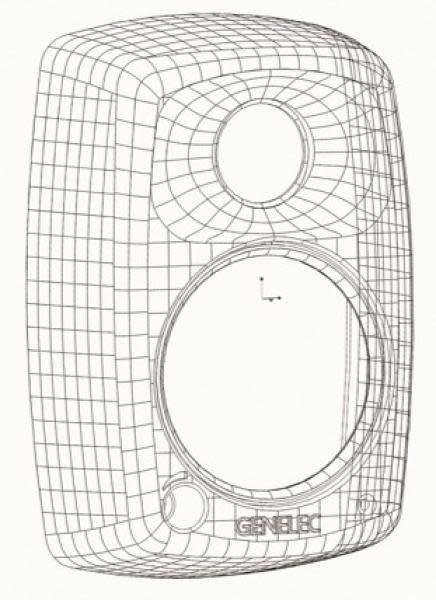
The DCW waveguide has been integrated in the MDE aluminium enclosure to provide improved control of the loudspeaker’s directivity. Basically, the low frequency limit for constant directivity is determined by the size of the waveguide, so the larger the surface the better the control. With a very controlled off-axis radiation, the listening window becomes consistent, which is of utmost importance with multi-channel audio monitoring. Controlled directivity also reduces possible first order reflections on surfaces near the loudspeaker, helping to provide consistent audio reproduction in different acoustical environments. In fact, the entire front baffle is gently curved and the acoustically transparent grilles are part of the outer cabinet aesthetics, blending perfectly with the various other curved surfaces.

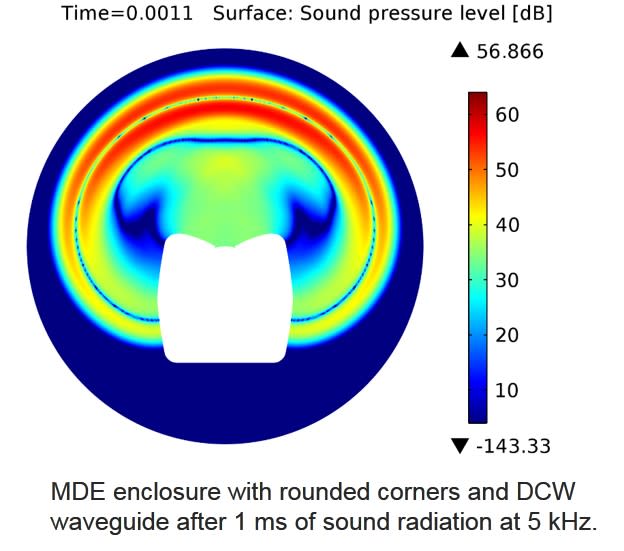
Advanced reflex port design for extended low frequency response.

Genelec’s choice for vented, or reflex, enclosures dates back to the S30 model, the first Genelec product from 1978. Port performance has been improved and refined over the years with the aim to increase the woofer’s low frequency extension and sound pressure level capability to provide outstanding bass articulation and definition.
Both driver and vent contribute to the total radiation of a reflex enclosure. Most radiation comes from the driver, but at the vent-enclosure resonant frequency the driver displacement amplitude is small and most of the radiation comes out of the vent.
To minimise the air speed in the tube, the cross sectional area of the vent should be large. This in turn means that the vent tube has to be long which presents quite a design challenge.
The long, curved tube maximises airflow so deep bass can be reproduced without compression. The reflex tube terminates with a wide flare located on the rear of the enclosure, minimising port noises and providing excellent bass articulation.
The curvature of the tube has also been carefully designed to minimise any audible noise, compression or distortion. The inner end of the tube has proper resistive termination to minimise once again audible chuffing noise and air turbulence.
Proper reflex port design allows also to significantly reduce the woofer’s displacement, improving the linear low frequency output capacity.
Sophisticated drive unit protection circuitry for safe operation.

When working in critical audio production environments it is essential that monitoring systems remain reliable and functional at all times. One of the main reasons behind Genelec’s excellent success in broadcasting environments is the reliability of our products and a key element behind the reliability is the internal protection circuitry found in all products since 1978.
The protection circuitry prevents driver failures by detecting signal levels, and in case of sudden peaks or constantly too high levels, taking the signal level down automatically. Of course this feature does not affect the sound quality in any way when working within the specifications of the loudspeaker, but only prevents inadequate input signals from breaking the loudspeaker.

Protection circuitry features and benefits:
- Reduces the output level when required, (e.g. when driver voice coil temperature reaches the safe limit), which highly improves system reliability.
- Appropriate protection circuitry design in every loudspeaker and subwoofer enables the maximisation of system output sound level.
Intelligent Signal Sensing (ISS™) for power consumption reduction in stand-by mode.

Introduced early 2013, Genelec’s Intelligent Signal-Sensing technology has been developed to meet with both European Union ErP Directives and Genelec's own ambitious sustainability standards.
The Intelligent Signal Sensing, ISS™ circuitry tracks the signal input of the loudspeaker and detects if it is in use. If the ISS circuit does not find any audio on the input for a period of time, it sets the loudspeaker to a low-power sleep state and the loudspeaker will consume less than 0.5 watts. When an input signal is detected, the loudspeaker immediately turns itself on.
Additionally an ‘ISS Disable’ switch is located on each product’s back plate next to the other room response controls. First, when the mains power switch of the loudspeaker is set to 'ON', the ISS™ auto-start function (low-power sleep state on/off) of the loudspeaker is active.

If this function is not desired, the ISS™ function can be disabled by setting the 'ISS Disable' switch on the back panel to 'ON' position. In this mode, the monitor is only powered on and off using the mains power switch.
Note that the mains power switch will always turn the monitor off completely.
Each transducer is driven by its own optimised amplifier.

Audio electronic crossovers allow to split the audio signal into separate frequency bands that can be separately routed to individual power amplifiers, which are then connected to specific transducers optimised for a particular frequency band.
In a typical 2-way loudspeaker system, the active crossover needs two power amplifiers — one for the woofer and one for the tweeter. The power amplifiers are connected directly to the drivers of an active loudspeaker, resulting in the power amplifier’s load becoming much simpler and well known. Each driver-specific power amplifier has only a limited frequency range to amplify (the power amplifier is placed after the active crossover) and this adds to the ease of design.
The active design principle offers multiple benefits:
- The power amplifiers are directly connected to the speaker drivers, maximising the control exerted by the power amplifier’s damping on the driver’s voice coil, reducing the consequences of dynamic changes in the driver electrical characteristics. This may improve the transient response of the system.
- There is a reduction in the power amplifier output requirement. With no energy lost in the passive crossover filter components, the amplifier power output requirements are reduced considerably (by up to 1/2 in some cases) without any reduction in the acoustic power output of the loudspeaker system. This can reduce costs and increase audio quality and system reliability.
- No loss between amplifier and driver units results in maximum acoustic efficiency.
- Active technology can achieve superior sound output vs. size vs. low frequency cut-off performance.
- All loudspeakers are delivered as a factory aligned system (amplifiers, crossover electronics and enclosure-driver systems).
Active crossover operating at low signal levels.

Audio electronic crossovers allow the audio signal to be split into separate frequency bands that are separately routed to individual power amplifiers, which are then connected to specific transducers optimised for a particular frequency band.
Active crossovers come in both digital and analogue varieties. Genelec digital active crossovers include additional signal processing, such as driver protection, delay, and equalisation.
Genelec analogue active crossover filters contain electronic components that are operated at low signal levels suitable for power amplifier inputs. This is in contrast to passive crossovers that operate at the high signal levels of the power amplifier's outputs, having to handle high currents and, in some cases, high voltages.
In a typical two-way system the active crossover needs two power amplifiers — one for the woofer and one for the tweeter.
The active crossover design offers multiple benefits:
- The frequency response becomes independent of any dynamic changes in the driver's electrical characteristics or the drive level.
- There is increased flexibility and precision for adjusting and fine-tuning each output frequency response for the specific drivers used.
- Each driver has its own signal processing and power amplifier. This isolates each driver from the drive signals handled by the other drivers, reducing inter-modulation distortion and overdriving problems.
- The ability to compensate for sensitivity variations between drivers.
- The possibility to compensate for frequency and phase response anomalies associated with a driver’s characteristics within the intended pass-band.
- The flat frequency response of a high-quality active loudspeaker is a result of the combined effect of the crossover filter response, power amplifier responses and driver responses in a loudspeaker enclosure.
Using the active approach enables frequency response adjustments and optimisation of the full loudspeaker system, placed in various room environments, without expensive external equalisers. The end result is a simpler, more reliable, efficient, consistent and precise active loudspeaker system.
Vibration decoupling Iso-Pod™ stand improves sound image definition.

Although it is advisable to use sturdy and stable floor stands together with free-standing loudspeakers, a very common solution is to place loudspeakers directly on a table or on a console meter bridge.
This causes several detrimental side effects. Aiming of the loudspeaker axis towards the listener is rarely implemented, also, unwanted mechanical vibration do propagate from the loudspeaker to the mounting surface, and first order reflection on the work surface causes comb filtering and hence ripples in the frequency response.
To solve these very common problems Genelec developed an efficient and very practical solution. We designed a loudspeaker stand called Iso-Pod™ - Isolation Positioner/Decoupler that is attached to the aluminium enclosure. It has four shallow feet and it is made from special lossy rubber-like material. It is firmly attached to the enclosure so that it can be slid along the curved bottom or side surface to allow for a ±15° tilt of the loudspeaker.
The loudspeakers’ acoustical axis can then be pointed precisely towards the listener by adjusting the enclosure’s inclination with the Iso-Pod. The vibration isolation and damping properties reduce midrange coloration caused by unwanted vibration transmitted to supporting surfaces.
This innovative solution is an integral part of Genelec loudspeaker design and provides clear benefits in usability and sound quality.
Versatile mounting options for all installation needs.

In addition to perfect acoustical design and advanced tailoring options to optimize the loudspeaker’s behaviour to the room environment, Genelec loudspeakers offer a variety of mounting options for easy installation in different applications.
Our wide range of accessories and fixed mounting points on the back of our aluminium enclosure products offer solutions to all common installation situations. M6 support points have been integrated in the die-cast enclosure for wall and ceiling mounts.
Some models also feature a 3/8” thread at the bottom of the enclosure to fit a robust microphone stand. Other larger and heavier models feature M10 fixing points. Special floor stand plates have been designed in order to fit the Iso-Pod stand that is part of our product design.
With these features our loudspeakers have found their way to a variety of applications beyond the professional audio and studio world, for example in commercial and AV installation projects as well as in home environments all around the world.
Bass Management System handles multichannel low frequency content.
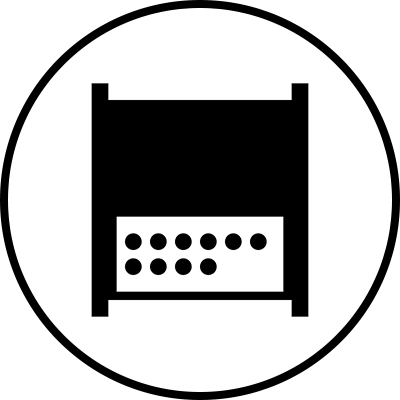
The principle of bass management is that the bass content of the main channels and the Low Frequency Effect (LFE) channel are directed and reproduced only by loudspeakers capable of handling them, whether they are main system loudspeakers or one or more subwoofer(s).
In stereo reproduction, signals from 20 Hz to 20 kHz need to be replayed. Large multi-way monitoring systems will reproduce such a wide bandwidth evenly. With multichannel audio, professional and consumer audio systems must also be able to reproduce audio between 20 Hz and 20 kHz for each channel. To achieve this, main monitors, subwoofers and crossover electronics should work together.
A Bass Management system uses either analogue electronic circuitry or software based filtering which will filter low frequency information from the main channels and route that information to one, or more, subwoofer feed.
The dedicated LFE channel can also be monitored via that subwoofer and added to the low frequencies of the other main channels. Therefore, the Bass Management’s basic and main goal is to ensure that the entire audio bandwidth of all channels can be accurately monitored.

The benefits of the Bass Management System:
- The subwoofer extends the system frequency response down the lower limit of the audible range
- Monitor can produce a higher maximum sound level when not reproducing low frequencies
- Optimized low frequency reproduction by selecting adequate subwoofer location; monitors can also be placed more freely
- Subwoofer’s output are aligned in level and phase with monitors allowing flat and accurate reproduction down to 19 Hz and across the crossover point
- LFE channel output level (0 or +10 dB re. main channels) can be selected for accurate reproduction depending on the source type
- The ability to bypass the subwoofer allows to evaluate the audible impact of the subwoofer
Highly efficient Laminar Spiral Enclosure (LSE™) provides accurate low frequency reproduction.
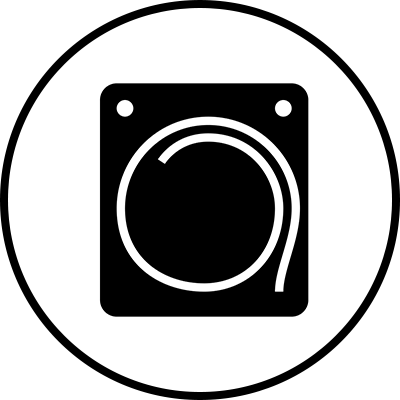
The demands placed on subwoofers over the last years have increased substantially to the point where traditional design concepts are no longer valid. For Genelec, in order to achieve the absolute best performance possible, bold initiatives must be taken.
Drawing on years of acoustic research and knowledge, Genelec's engineering group accepted the challenges placed upon them in the beginning of the 21st Century. The totally unique, curvilinear shape of the LSE™ Series Active Subwoofer enclosure is the revolutionary patented result of their efforts.
All of the Genelec LSE™ series subwoofers feature this innovative Laminar Spiral Enclosure™ (LSE™) bass reflex cabinet. It provides excellent laminar flow characteristics with minimal turbulence noise and enables an optimal packing of a very long reflex tube into a small space.

The learnings from the LSE Technology are also utilized in the reflex port design of our aluminium enclosure products.
The spiral-shaped design yields an extremely rigid enclosure exterior while also forming the subwoofer's integral port. The fact that one is part of the other means that air flow in and out of the enclosure's interior through the port is totally unrestricted. This results in an extraordinarily accurate and responsive low-frequency system with measured second and third harmonic distortion levels typically better than 30 dB below the fundamental.

When combined with Genelec stereo and multichannel bass management active electronics, the LSE™ Series Subwoofers provide a low-frequency listening experience like no other. The result is a product range with impeccable technical performance: The Genelec LSE subwoofer range is unique, complete, functional, different from any other products on the market, and consistent.
Encuentra tu representante

Documentos
Operating Manual 8331A Brochure The Ones The Ones 产品手册 Immersive Solutions Brochure Operating Manual 8331A - Chinese Operating Manual 7360A Brochure 7360A SAM™ Series Full Line Catalogue Bass Management User Guide Daisy-Chained Subwoofers and LFE Channel Management Genelec Home Studio Audio Monitoring Guide (2023) 7360A & 7370A Operating Manual (Chinese)Descargas
Line Drawings (PDF) 8331A Line Drawings (DWG) 8331A 8331A - Simulation File (CLF) 8331A - Simulation File (GLL) Line Drawings (PDF) 7360A Line Drawings (DWG) 7360AReseñas
Production Expert: Genelec 8331 SAM & 8341 SAM "The Ones" Studio Monitors & GLM™ 3 - Do They Re-Write The Rule Book?, August 2018 (UK) Amazona.de: GENELEC 8331 A, AKTIVE DSP STUDIOMONITORE, October 2018 (DE) proaudio.de: Genelec Aktiv-Lautsprecher 8331A mit Loudspeaker Manager User Kit, August 2018 (DE) fairaudio: 8331 Review, April 2018 (DE) Bonedo Magazin (online): Genelec 8331A Test - 3-Wege-Koaxial-Studio-Monitor, March 2018 (DE) Recording Magazine (PDF): Genelec 8341 and 8331 Studio Monitors and GLM 3 Software, March 2018 (US) LowBeats Online-HiFi-Magazin: Test Genelec 8331 A – der unbestechliche Nahfeld-Monitor, February 2018 (DE) Stereo Sound: 8331 & 8341 Review, November 2017 (Japan) Sound & Recording Magazine: Double Woofer Coaxial 3 Way Monitor with DSP Correction Function, 2017 (Japan) MusicTech Magazine: Genelec The Ones SAM 8331 & 8341 Review – Raising The Bar, November 2017 (GB) Audio Media International (PDF): Genelec 8331, November 2017 (GB) Sound on Sound Magazine: Genelec The Ones by Hugh Robjohns, July 2017 (UK) Resolution Magazine/Monitoring Supplement: “Creating Ultimate Point Source”, May 2017 (GB)Preguntas frecuentes
The Classic 8000 Series monitors have an analogue input. The 7200 Series SAM subwoofers have AES/EBU digital outputs only. However, other 7300 Series SAM subwoofers have analogue inputs and outputs and can be used also with analogue monitors.
Which SAM™ Products You Are Going to Mix With the Classic 8000 Series?
Mixing 8000 Series and SAM™ monitors is not recommended
We do not recommend mixing Classic 8000 Series monitors with SAM™ Monitors.
If the analogue input sensitivity of 8000 Series and SAM™ Series monitors are the same, Genelec SAM™ Monitors exhibit a slightly larger latency (< 5 ms) than 8000 Series monitors. Therefore Classic 8000 Series and SAM™ Series monitors should not be mixed in a stereo pair or multichannel setup.
It is alright to mix Classic 8000 Series with SAM™ Subwoofers
However, it is okay to mix the Classic 8000 Series monitors with SAM™ Subwoofers. Any Classic 8000 Series monitors can be used with SAM™ Subwoofers, in any stereo or multichannel setup.
Setting the room response calibration controls
Genelec monitors are calibrated flat in anechoic free field conditions. When the monitor is placed in a room close to walls or other boundaries, the low frequency output of the monitor increases. To achieve a flat low frequency response an adjustment of typically -4 dB on the bass tilt control is used. Genelec also provides a bass roll-off control to compensate for any remaining excessive LF energy around the low cut-off frequency.
Genelec GLM AutoCal can implement a more precise compensation after measuring the acoustic effects produced by the monitor’s installation location.
Differences in room reverberation time and listening distance can lead to changes being required in the treble region so treble tilt is fitted to most of the models in the Genelec range.
In three-way monitors and large main systems there are additional driver controls for the bass level, mid level and treble level which enable very fine adjustment of the frequency response so that the monitors can be placed in many different listening environments, whilst still achieving a consistent and neutral sound reproduction.
The best way to set the room response controls of a Genelec monitor is by taking an acoustical measurement at the listening location, using a measurement system for those products that offer local controls (DIP switches) on the monitor or subwoofer, or by using GLM AutoCal for the SAM™ (Smart Active Monitoring) products.
"These studio monitors pack a serious amount of technology into a very compact package. Can all this tech combat the issues associated with powerful rear ported designs and can the GLM™ 3 system cope with a truly dreadful set of listening circumstances?"
The Production Expert's comprehensive review "Genelec 8331 SAM & 8341 SAM "The Ones" Studio Monitors & GLM™ 3 - Do They Re-Write The Rule Book?" does not only list the pros and cons, but also describes the user experience of the products.
The review was published in August 2018.
The test review of amazona.de "TEST: GENELEC 8331 A, AKTIVE DSP STUDIOMONITORE" is written by Raphael Tschernuth and it was published in October 2015. It is in German.
The test review of amazona.de "TEST: GENELEC 8331 A, AKTIVE DSP STUDIOMONITORE" is written by Raphael Tschernuth and it was published in October 2015. It is in German.
Proaudio.de website's online review of Genelec 8331A studio monitor and GLM kit. The review is written in German and it was published in August 2018.
Proaudio.de website's online review of Genelec 8331A studio monitor and GLM kit. The review is written in German by Erol Ergyn, and it was published on 7th August, 2018.
fairaudio HiFi-Magazin's (DE) online review of 8331 SAM™ Studio Monitor. The review is written in German. Published in April 2018.
fairaudio HiFi-Magazin's (DE) online review "Test: Genelec 8331A Aktivlautsprecher - Finnische Bonbons" was published online on 23th April, 2018. It is written by Nick Mavridis.
Read the full review in German: fairaudio: 8331 Review.
"Genelec hat vor kurzem zwei sehr kleine 3-Wege-Coaxial-Monitore ihrer Serie "The Ones" vorgestellt. Mit gleich zwei kleineren Geschwistern zur Genelec 8351 bringen die Finnen die fürs kleinste Gehäuse komplett neu konzipierten Varianten 8341 und 8331 auf den Markt. Lohnt sich die Anschaffung? Im bondeo-Test wird das kleinste Modell, die Genelec 8331A auf den Prüfstand gestellt."
-Patric Louis, the author of the review article
Bonedo Magazin's (DE) online review "Genelec 8331A Test - 3-Wege-Koaxial-Studio-Monitor" of 8331 studio monitor. The review was published in March 2018, and is written by Patric Louis. It is available in German language.
Read the full review here.
"Two new 3-way coaxial monitors to fit any room—and software to ease the process."
Recording Magazine's (US) review of Genelec 8341 and 8331 studio monitors and GLM 3 software written by Paul Vnuk Jr. and Mike Metlay. The review was published in March 2018.
Read the full review: Recording Magazine 8331, 8341, and GLM 3™ Review
LowBeats Online-HiFi-Magazin's (DE) review of 8331 SAM™ Studio Monitor. The review is written in German and it was published in February 2018.
LowBeats Online-HiFi-Magazin's (DE) review of 8331 SAM™ Studio Monitor. The review is written in German and it was published in February 2018.
Read the full review: LowBeats Online-HiFi-Magazin 8331 Review
Stereo Sound Online Magazine's (JP) review of 8331 and 8341 SAM™ Studio Monitor. The review is written in Japanese and it was published in November 2017.
Stereo Sound Online Magazine's (JP) review of 8331 and 8341 SAM™ Studio Monitor. The review is written in Japanese and it was published in November 2017.
Read the full review: Stereo Sound 8331 & 8341 Review
The Sound & Recording magazine's review (JP) "Double Woofer Coaxial 3 Way Monitor with DSP Correction Function" was published in 2017. It is written in Japanese.
The Sound & Recording magazine's review (JP) "Double Woofer Coaxial 3 Way Monitor with DSP Correction Function" was published in 2017. It is written in Japanese.
Read the full review here.
MusicTech Magazine's (GB) review of 8331 and 8341 SAM™ Studio Monitor. Published in November 2017.
MusicTech magazine's review of Genelec 8331 and 8341 studio monitors. The review is written by Andy Jones and it was published on MusicTech's website in November 2017.
"The 8331s are the smallest in the range of Genelec’s point source monitor range it calls The Ones. Here, Stephen Bennett gives Audio Media International his expert opinon about these small but mighty speakers."
Audio Media International's (GB) review of 8331 SAM™ Studio Monitor. The review was published in November 2017.
Read the full review: Audio Media International 8331 Review
"The culmination of years of R&D, these revolutionary new speakers offer performance way beyond what you’d expect from their size."
-Hugh Robjohns, the author of the review article
Sound on Sound Magazine's (UK) review of 8331, 8341 and 8351 SAM™ Studio Monitor. Written by Hugh Robjohns. Published July 2017.
Read the full review: Sound on Sound 8331, 8341 and 8351 Review
"Collectively, the three monitors make up The Ones, a range combining the best of coaxial and point source to create what Genelec is calling Ultimate Point Source. Resolution speaks to Aki Mäkivirta to find out more."
Resolution Magazine Monitoring Supplement's (GB) review of The Ones. Published May 2017.
Read the full review: Resolution Magazine/Monitoring Supplement The Ones Review

